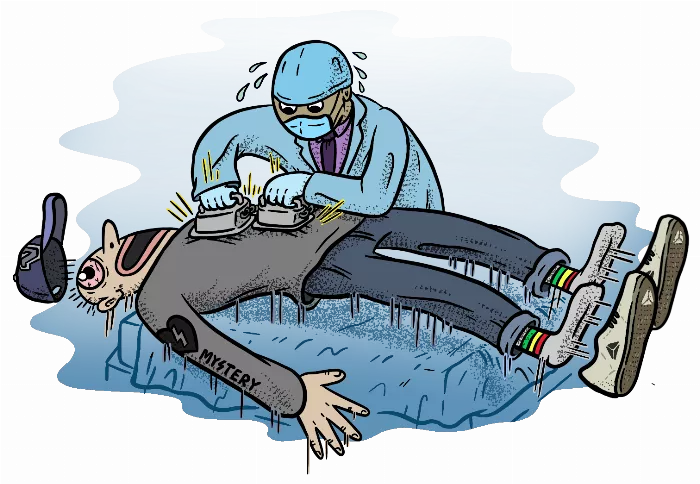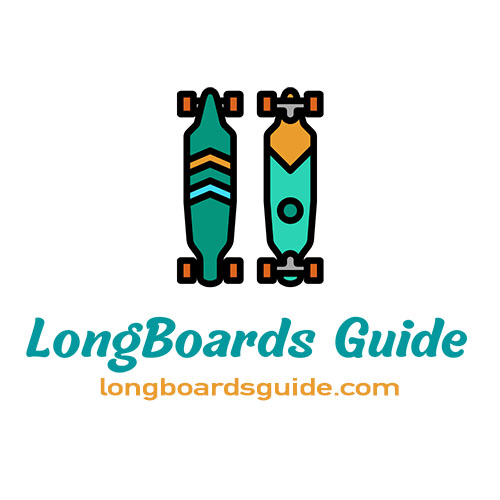Longboard pumping may not be a common topic, but it is a hot and ongoing issue among those who have experienced it.
This type of longboarding is the most popular longboarding technique among many longboarders.
Besides, many longboarders claim to be sick of riding their boards. Therefore, pumping a longboard comes in handy in this situation.
This tutorial focuses on how to pump on a longboard. If you’re looking for long-distance pumping techniques, this guide will be useful. Click on for more!
What is Longboarding Pumping?
Longboard pumping is the most modern incarnation of figure skating. In conventional longboard running, the players must lift their legs.
On the other hand, pumping on a longboard employs weight to drive the board ahead or the other way around.
Instead of pedals, the longboard pump can propel your longboard swiftly over short and long distances on flat ground or even uphill.
It is just moving one’s body weight from side to side to provide the momentum needed to move a long table ahead.
When adopting this technique, the longboarders must balance by transferring their weight from left to right.
A person will be able to increase his speed and sustain momentum, allowing the rider to pass zig-zag roads.
Because the longboard will remain on the ground after being inflated, it will give balance and speed.
Board Setup for Longboarding Pumping
It would help if you thoroughly prepared your longboard before pumping it.
Here are some tips to guarantee that you have all the necessary equipment and that everything is in working order.
Deck
You’ll have trouble maintaining momentum if your deck isn’t designed for pumping. Extra-long boards can be difficult to pump.
A flexible deck will pay you back and up and out of it if you don’t have it. You will be able to adjust your direction more quickly this way.
Furthermore, it will pull you up, allowing you to exert sufficient effort to get down and handle each pump.
Pumping relies on tight turns, and every decision you make on your deck will impact how tight you are. You will have a comfortable journey while traveling.
Top-mounted skateboards are the greatest alternative. They will provide you with the greatest advantage over vehicles, allowing you to turn completely without drifting to the right or left.
Trucks
One of the most crucial components of longboarding is the trucks. As a result, taking a few essential elements into account is beneficial.
When choosing a deck, the type of vehicle you choose when fully completed will require the same balance.
On the market, there are a variety of trucks to choose from. Each has its own set of qualities, and you must choose the best one for your long-distance pumping.
Although narrower vehicles are sometimes superior for pumping, they lack larger trucks’ stability and speed power.
Using the wider vehicle results in a higher top speed. However, they must exert some effort to achieve a particular speed.
A soft bushing is quite important for movement. Meanwhile, a firm bushing might be a good choice if you enjoy speed.
Bearings
You don’t need super-fast or expensive bearings for long-distance pumping.
After a few minutes of spinning the bearings, you can move on. All you have to do now is keep your bearings.
Maintain your bearings clean and greased, regardless of the type. Friction is the enemy of pumping, and unclean bearings can slow you down.
It would help if you were allowed to pump as long as your wheels spin freely and show no tripping signs during the race.
Flex
Higher flex on long pumps might damage deck bends and even cause power outages.
For good controllability, we prefer bamboo or fiberglass bends. These are useful for pumping since they allow for exact bending.
Wheels
Choose the wheels with the maximum grip if pumping is your top priority.
The stone surface gives grip as soon as it exits the shelf, but this surface roughness will soon spread to all wheels.
The durometer is one item that does not vary over time. Softer wheels provide more traction than stiffer wheels.
Their roughness gives you peace of mind that the wheel won’t slip from beneath you when you’re pumping the holes.
Your wheels should not be overly soft. Friction is higher on soft wheels that they become mushy than on firmer wheels. They’ll slow you down to the point where you can’t keep up with the pace.
How To Pump On A Longboard
Body Position
Pumpers have to do the same standing position as when they play with the board.
Stand with your feet shoulder-width apart and sideways. Don’t stand with your feet too far apart.
They are too far apart if positioned on top of truck bolts. They should be close enough to the board’s center to bend the deck in the center.
By spacing their feet further apart, heavier longboarders can avoid tetanus.
Technique
First Learn to Carve
It is preferable to learn to carve before practicing pumping.
It is an exaggerated sculpting movement that is meticulously timed to keep the energy we put into each turn.
The engraving is merely tilted in the direction of the turn. Keep your center of gravity at the top while tilting the board left or right.
Even if you feel like you’re about to fall, centrifugal force will keep you standing.
Heelside vs. Toeside
Depending on how you learn to ride, it may be simpler to sustain your momentum in one direction.
The majority of people prefer the toe or the heel. Try not to place too much faith in any of your assets.
You’ll need to learn to rotate the pump in both directions smoothly if you want it to keep working.
Getting Going
Although pumping is to maintain your speed without pushing, you’ll still need to push a few times to get off of the starting block.
It’s simple to sustain speed after achieving it, but there’s no way around walking on flat ground.
Dive to Turn
Drilling deeply into a turn is the key to constructing a flawless pump.
People may appear to be squirming as if they were running up a hill to pump, but this is a waste of time.
Pumping is as simple as leaning back and leaning against the deck. As a result, if you begin with a heel swing, you’ll want to sit down as you lean.
Flex the Deck
Work together to bend the deck in the middle as you lean into the initial spin. Flexibility accomplishes two goals.
First, it stores energy that the board can use to straighten itself and return to you.
Second, it marginally reduces the turning radius of the inclined hangers.
The turning radius doesn’t change much, but it shouldn’t impact the tightness of the rotation.
Unsprung Your Weight
This is the most difficult part, but it is also the most important.
Pull the board vertically while subtly moving the board forward once you’ve done cutting to the side.
It would help if you aimed upwards until you feel weightless for a brief while. Don’t attempt to fly totally.
At least a portion of your foot should contact the board. You should feel the board bounce off your initial turn if you time it right.
Dive Back In
Place as much weight on the opposing side of the board as possible as gravity pulls you back to the board.
If you started with a toe spin, you need to land on a board that’s dug into a heel spin.
As you peel oppositely, remember to keep your weight in the center of the deck.
Squeeze it and bring your weight into the curve on the opposing side to contact the opposite side.
To learn more about pumping techniques, watch the video below:
Keep It Going
Once you’ve learned how to properly time dives and tetanus, you’ll be able to build your pumping rhythm.
Your speed, as well as your weight and agility, will be affected by the components you pick to drive.
Avoid becoming twitchy and rapid in your motions since this will tire you out.
On the other hand, purposely overdoing it can cause you to lose momentum by slowing down your motions too much.
Allow your personality to dictate your rhythm, just like you would with dance or anything else that requires exact body movement.
What Are Some Things You Need to Keep in Your Mind?
So you’re ready to start to pump. But how? Here are a few things you need to remember.
- Always strive to maintain a consistent rhythm. These pointers will assist you in increasing your speed and maintaining your momentum when pumping for long periods.
- Digging is highly useful for good pumping. Make an effort to push into each etched line on your board.
- Another more helpful method than putting more pressure on your toes or heels is pumping into lengthy feet. It will assist you in rapidly flipping each game.
- Pumping is impossible to master without consistent practice and dedication. No one will be able to stop you once you’ve mastered it.
Conclusion
How to pump on a longboard? If you’re bored of pushing, try expanding. On flat ground, that’s essentially the only way to escape getting kicked repeatedly.
If you’ve never tried longboard pumping before, you’re surprised.
Almost everyone has irritation while learning to inflate, but the long-term benefits are always worth the effort.






